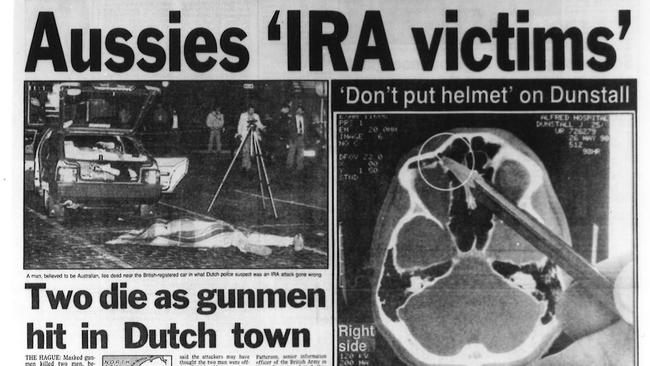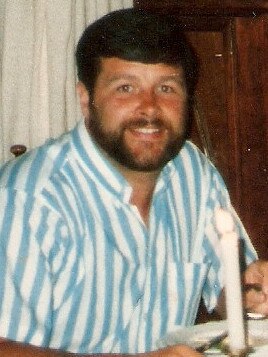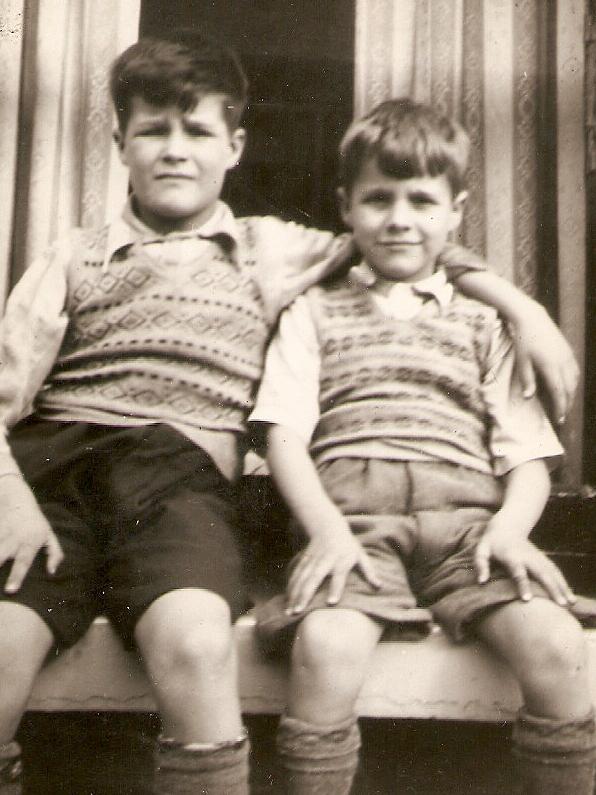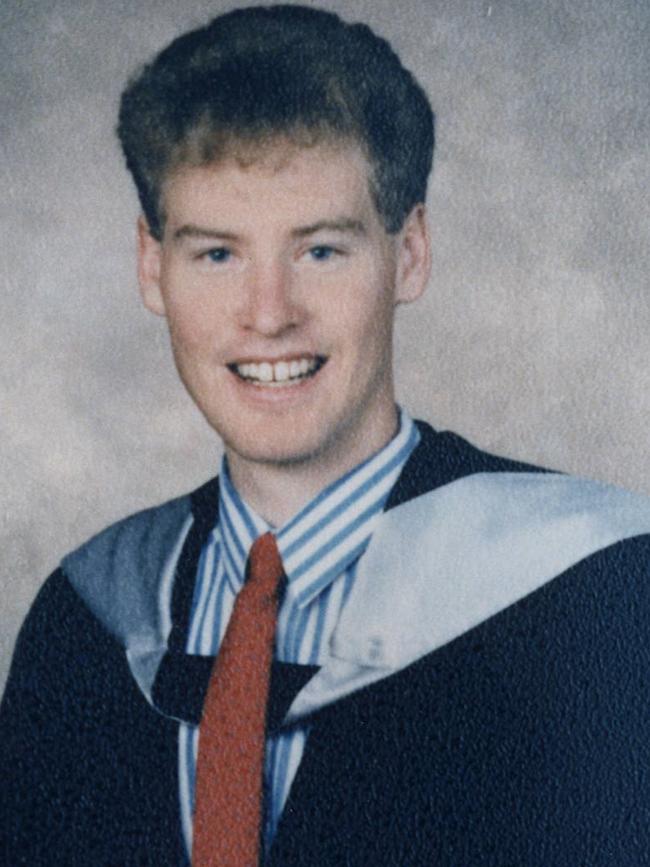Brother’s quest for the truth reveals Aussie twist
A 30-year search for those behind a 1988 IRA execution now stretches all the way to Australia, it can be revealed.

True Crime
Don't miss out on the headlines from True Crime. Followed categories will be added to My News.
It had been a 30-year quest for George Larmour to investigate the murder of his brother John, gunned down in an IRA execution in 1988 in the family’s ice cream shop in Belfast.
But in an extraordinary twist, it can now be revealed the gun that killed his policeman brother was not only a police service issue weapon but has now also been linked to the gunning down of two Australian tourists, mistaken by IRA assassins as off duty British soldiers.
At the high security Forensic Science NI centre in Carrickfergus north of Belfast, a gun was placed on the armoury bench in front of George Larmour.
Standing there in his issued white lab coat, he paused for a moment as he stared at the police issue Speed-Six Ruger .357 then he made to reach for it.
“If you touch it like, I will have to arrest ya,” the Northern Ireland forensics officer said with a grin.
George looked at the officer and was about to respond but thought better of it; there were a lot of heavy security doors to get to this point and he didn’t want to end up behind one of them.
“I was very tempted to do so, to touch it, because I thought at least then they could have bloody arrested somebody for handling it,” George recounted last week.
“The devil in my head was saying ‘go on do it for goodness sake it will make a great headline in the paper’ but I didn’t do it. I saw what I wanted to see, it wasn’t going to bring anybody back.”

It had been a 30-year quest for George Larmour to investigate the murder of his brother John, gunned down in an IRA execution in 1988 in the family’s ice cream shop in Belfast.
But in an extraordinary twist, it can now be revealed the gun that killed his policeman brother was not only a police service issue weapon but has now also been linked to the gunning down of two Australian tourists, mistaken by IRA assassins as off duty British soldiers.
Lawyers Nick Spanos, from Sydney and Stephen Melrose from Brisbane, were holidaying with their partners when they were gunned down on May 27 1990 in the Roermond town square in the Netherlands, on the Dutch border with Germany.
No-one has ever been convicted of murdering the two Australians nor Royal Ulster Constabulary PC John Larmour but in trying to investigate his brother’s case, George Larmour and his nephew Gavin made the stunning discovery of the weapon and links between the murders.
Mr Larmour said the importance of the find after months of investigations – and seeing the gun himself complete with a hole where the policeman’s lanyard would have been and the filed down serial number – not only created a new line of inquiry and link to events and killers but casts the three murders in a different light.
They were less opportunistic and were aimed at sending a message.


The Ruger was believed to have been one used by a paramilitary loyalist Michael Stone in an attack on a 1988 IRA cemetery burial where he killed three IRA members before the funeral mourners wrestled him to the ground, disarmed him and later handing him over to police. The gun disappeared into the crowd.
How he came to possess a police weapon and who it was originally issued has not been established but he may have been given it to carry out the cemetery attack, as a member of the proscribed terrorist group Ulster Defence Association committed to attacking the IRA and Irish Catholics.
Once the gun fell into IRA hands, it and another Browning pistol famously taken from a murdered British soldier were to be used by the IRA specifically so as ballistics could show security were being killed with their own weapons.
“Using that particular weapon shows these were now honour killings, using the guns of security forces, they took that Ruger and another taken from an Army corporal, to use in Europe and the Ruger was used in the killing of the two Australian lawyers,” Mr Larmour said.
“It was a very deliberate act, to show the world they were now using an army gun and a police issue gun to kill, these famous guns it’s twisted logic but they are massive into propaganda … so even 33 years later I’m still finding out the truth about the simple owner of a gun.”


It took years for the weapon to be found even though the police’s own historical team created to solve cold cases never made the connection.
“They (authorities) don’t want to open these kind of cans of worms that show they had a police gun and they probably know who gave it to them but that’s just digging too deep and there is only so much anyone would want to come out. That’s the nature of this place I’m afraid. I got to the stage with not being surprised at anything anymore.”
PC Larmour, a 12-year police veteran, was doing a favour for his brother on holidays in Spain when off duty he agreed to lock up the family’s Barnam’s World of Ice Cream parlour. He was shot dead, unsuspectingly while serving his IRA assassin a chocolate slider.
There were suspects named for all three killings, with four suspects brought to court charged over the killing of the Australians but all were released on appeal but linked to a string of other deadly attacks.
For Mr Larmour, seeing the gun was not “a eureka moment”.
“These sorts of things don’t bring anyone back but it’s a way to say ‘you are not forgotten, we still seek the truth’ and hopefully that continues,” Mr Larmour said.

Hopefully, because British Prime Minister Boris Johnson plans to end all future prosecutions stemming from The Troubles, the 30-year Northern Ireland conflict that technically ended with the Good Friday Agreement in 1998. Under the plan, “a line in the sand” would be drawn under that period with an end to legacy inquests, investigations, prosecutions and civil actions.
That includes any review of the Larmour, Spanos and Melrose slayings.
This is despite the current independent police led Operation Kenova, probing 200 murders, kidnaps and tortures and as revealed earlier now hunting suspects as far afield as Australia.
Critically, the probe is also looking at murky links between all parties including the IRA and security forces, agents and informants working for both sides, including police and military service revolvers now known to have been used by the IRA.
A decision on new legislation to deal with the period is expected in the new year.


